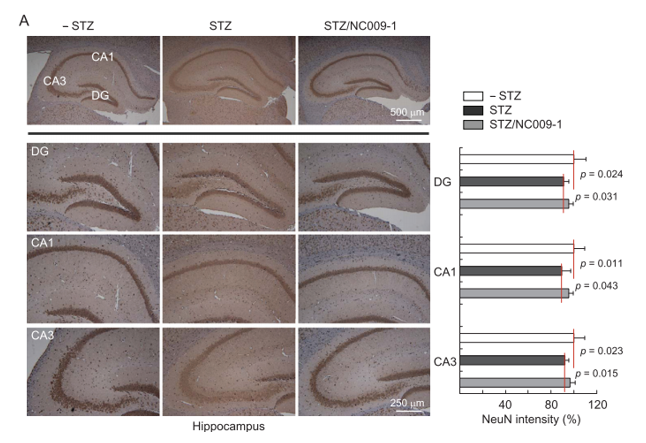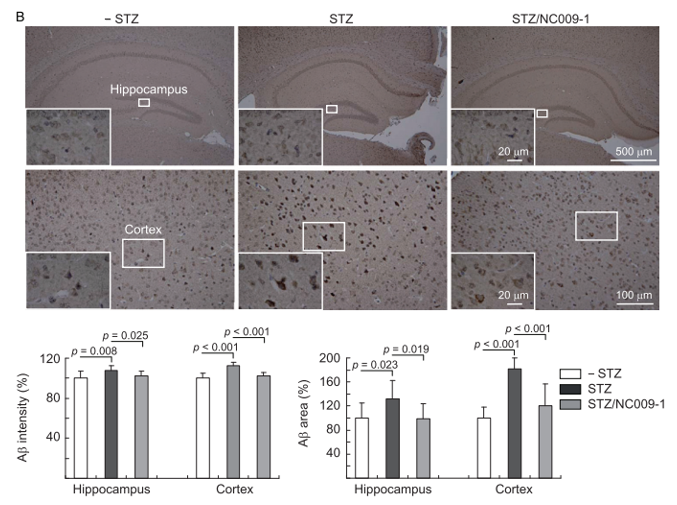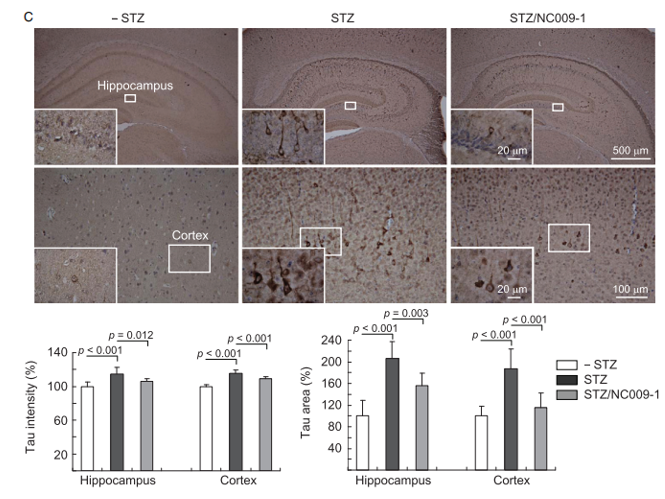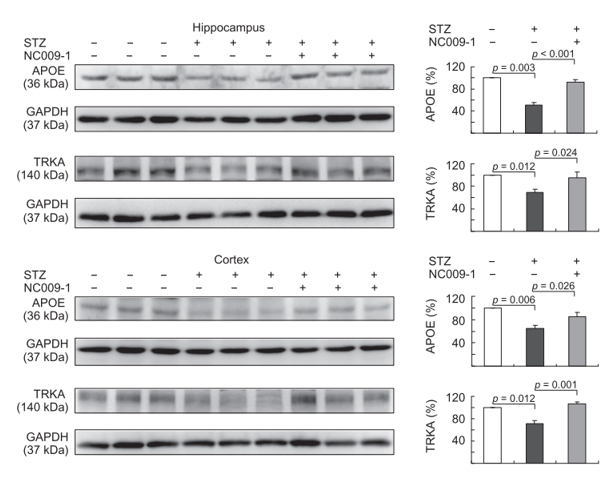Streptozotocin (STZ) Induced Model
Alzheimer's disease (AD) is composed of sporadic AD (SAD) and familial AD (FAD). Most AD cases are sporadic and mainly related to environmental, genetic, and metabolic factors. For example, abnormal glucose and energy metabolism in the brain of sporadic AD is not only related to neuronal insulin and insulin receptor signal transduction, but also may contribute to the development of AD. Streptozotocin, a compound that inhibits the function of insulin receptors and induce diabetes, can also cause cognitive impairment in animals. Creative Bioarray provides our customers with streptozotocin induced non-transgenic mouse/rat model for drug screening against abnormal energy metabolism in the brain of AD. In addition, streptozotocin induced hyperglycemic 3×Tg-AD mouse model is also available at Creative Bioarray for our customers to study the association between diabetes and AD.
Streptozotocin induced models include but not limited to:
- Streptozotocin induced non-transgenic mouse/rat model
- Streptozotocin induced hyperglycemic 3×Tg-AD mouse model
Our Capabilities
- We offer streptozotocin induced model to screen drug candidates for treatment of Alzheimer's disease.
- We provide comprehensive behavioral and cognitive testing on AD model and the drug screening.
- We utilize LTP (long-term potentiation) assay to evaluate your preclinical drug candidates against the synaptic impairments in animals.
- We evaluate anti-oxidative stress in the brain of animals treated with drug candidates.
- We assess various biomarkers through WB, IHC, ELISA, sequencing, etc.
Assays available
- Learning and memory deficits tests
- Synaptic impairment
- Oxidative stress
- Neuroinflammation
- Phosphorylated tau
- Glycogen synthase kinase-3 beta (GSK3β)
- Neurofilament Light Chain levels
- Neuronal loss
- β-AP level
- Plaque load
- Enzyme activity related to cholinergic system
- NMDA receptor function and excitotoxicity
- Mitochondrial dysfunction
- Brain slice staining and synaptic electrophysiology
With extensive experience in the field of AD, we are confident to help you to overcome any upcoming challenges. Our experts are fully capable of customizing our protocols and assays to meet your specific needs. With our help, we wish to facilitate your research with high efficiency.
Study examples


 Figure. 1. Indole compound NC009-1 increases NeuN and decreases Aβ and tau immunoreactivity in STZ-treated 3 × Tg-AD mice. Mice in- -STZ, STZ, and STZ/NC009-1 groups received vehicle, STZ, and STZ+NC009-1, respectively during the course of the experiment. A) Representative IHC images for NeuN and intensity quantification in the hippocampus of mice. DG, dentate gyrus; CA1 and CA3, Cornu Ammonis areas 1 and 3. B, C) Representative IHC images for Aβ and tau and intensity and area quantification in the hippocampus and cortex of mice and p values between STZ versus -STZ mice or STZ/NC009-1 versus STZ mice were compared.
Figure. 1. Indole compound NC009-1 increases NeuN and decreases Aβ and tau immunoreactivity in STZ-treated 3 × Tg-AD mice. Mice in- -STZ, STZ, and STZ/NC009-1 groups received vehicle, STZ, and STZ+NC009-1, respectively during the course of the experiment. A) Representative IHC images for NeuN and intensity quantification in the hippocampus of mice. DG, dentate gyrus; CA1 and CA3, Cornu Ammonis areas 1 and 3. B, C) Representative IHC images for Aβ and tau and intensity and area quantification in the hippocampus and cortex of mice and p values between STZ versus -STZ mice or STZ/NC009-1 versus STZ mice were compared.
 Figure. 2. Indole compound NC009-1 augments APOE and TRKA expression in STZ-treated 3 × Tg-AD mice. Expression levels of APOE and TRKA in hippocampus and cortex were analyzed by western blot using GAPDH as a loading control. To normalize, the relative APOE and TRKA of STZ mice was set as 100% and p values between STZ versus -STZ mice or STZ/NC009-1 versus STZ mice were compared.
Figure. 2. Indole compound NC009-1 augments APOE and TRKA expression in STZ-treated 3 × Tg-AD mice. Expression levels of APOE and TRKA in hippocampus and cortex were analyzed by western blot using GAPDH as a loading control. To normalize, the relative APOE and TRKA of STZ mice was set as 100% and p values between STZ versus -STZ mice or STZ/NC009-1 versus STZ mice were compared.
Quotation and ordering
If you have any special needs or questions regarding our services, please feel free to contact us. We look forward to cooperating with you in the future.
Reference
Chen YC et al. Indole Compound NC009-1 Augments APOE and TRKA in Alzheimer's Disease Cell and Mouse Models for Neuroprotection and Cognitive Improvement. J Alzheimers Dis. 2019;67(2):737-756.